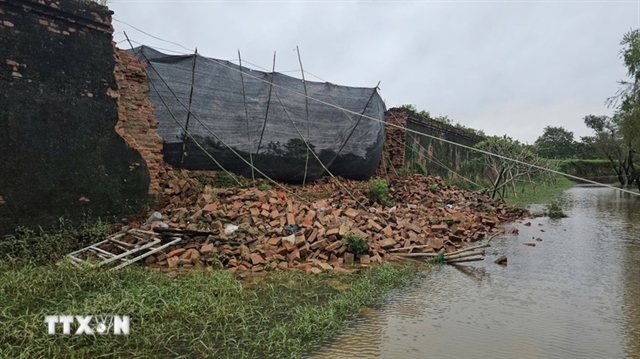 Society
Society


|
| PM Phạm Minh Chính chairs an online meeting on recovery efforts after Storm No. 10 and floods. — Photo the Việt Nam Government Portal |
HÀ NỘI — With communities reeling from the worst storm in a month, Prime Minister Phạm Minh Chính has ordered ministries and localities to move swiftly on urgent relief and recovery measures after Typhoon Bualoi, storm No 10, while also strengthening long-term disaster preparedness.
At an online meeting with Government leaders and 12 storm-hit provinces and cities on Friday, the Government leader instructed authorities to prioritise stabilising people’s lives, ensuring housing, food, water and essentials so that no one is left homeless or hungry.
He also called for continued search efforts for the missing, proper funerals for victims, and care for the injured. Localities must mobilise resources to rebuild 349 collapsed houses by December and complete repairs of damaged homes within October. Schools and healthcare facilities are to be restored by October 15, with medicines, equipment and supplies provided in full.
The PM also directed urgent repairs to electricity, water, telecommunications and irrigation systems and maximum support for households and enterprises to resume production, especially in agriculture. He asked the Ministry of Finance to accelerate financial assistance and insurance payouts for affected businesses, while directing the State Bank to work with commercial banks on rescheduling debts and offering new loans to aid recovery.
The Government leader emphasised the importance of continued assessment of damages and mobilising support from across society to help affected communities. PM Chính said safeguarding people’s lives and livelihoods should remain the top priority, noting that while early forecasting and preparedness had helped limit losses, considerable challenges still lay ahead.
Typhoon Bualoi, designated in Việt Nam as Storm No. 10, which struck in late September, was the strongest of four consecutive storms to hit Việt Nam in just one month. Its long landfall, coupled with heavy rain, caused widespread flooding, landslides and record river levels.
According to official data, 66 people were reported dead or missing, 164 injured and more than 172,000 homes damaged. At least 349 houses collapsed, nearly 1,500 schools and 145 health facilities were affected, and more than 100,000 hectares of crops and aquaculture were destroyed.
Damage to infrastructure was severe, with 8,800 power poles knocked down and 2.7 million households left without electricity at the peak of the storm. Total economic losses are estimated at nearly VNĐ15.9 trillion (US$600 million). The central province of Hà Tĩnh reported the heaviest damages at VNĐ6 trillion, followed by two northern mountainous provinces Tuyên Quang (VNĐ3 trillion) and Lào Cai (VNĐ2.75 trillion), and then Nghệ An (VNĐ2.12 trillion).
On Thursday, the PM approved VNĐ2.5 trillion from the central budget contingency fund for 15 affected localities. The Việt Nam Fatherland Front has also mobilised more than VNĐ673 billion in donations, with VNĐ265 billion already distributed to 17 provinces and cities.
In the long term, Chính stressed the need to enhance disaster prevention capacity as extreme weather events become more frequent. He called for stricter construction standards, safer infrastructure design, relocation from high-risk areas, and more investment in forecasting, monitoring and emergency response.
He also urged ministries and provinces to prepare for storm No 11, now forming in the East Sea (internationally known as the South China Sea).— VNS




